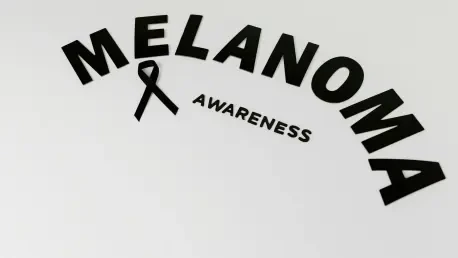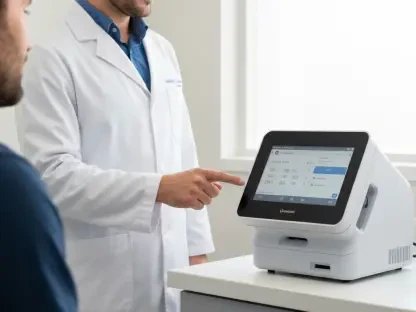In the rapidly evolving field of colorectal cancer screening, innovative methods are continually being assessed for their effectiveness and cost-efficiency. Today, we delve into the nuances of two such methods: CT colonography and stool DNA testing. To guide us through this complex landscape, we have the insights of Ivan Kairatov, a renowned biopharma expert familiar with the intricacies of medical technologies and innovations.
Can you explain the main differences between CT colonography and stool DNA testing for colorectal cancer screening?
CT colonography and stool DNA testing are both non-invasive methods for colorectal cancer screening, but they differ significantly in their approaches. CT colonography utilizes CT imaging to create detailed pictures of the colon and can detect both large polyps and other abnormalities. On the other hand, stool DNA testing focuses on detecting specific DNA markers in stool samples that are distinctive of colorectal cancer. The imaging approach can directly visualize polyps, while stool DNA depends on identifying genetic changes.
What prompted the study on comparing CT colonography with stool DNA testing in terms of cost and effectiveness?
The motivation for the study stems from the need to evaluate less invasive, cost-efficient alternatives to the traditional colonoscopy, which is more invasive and expensive. As colorectal cancer diagnoses rise in younger populations, understanding the relative clinical and economic benefits of these alternative options becomes crucial. This study aimed to provide clarity on which method might offer a better balance between cost savings and clinical outcomes.
How did the study simulate the progression of colorectal disease, and why was a Markov model chosen for this purpose?
The Markov model was selected because it is well-suited for simulating disease progression over time, capturing the transitions between different health states of potential patients. In this study, it allowed researchers to mimic the natural history of colorectal cancer within a simulated cohort of 10,000 individuals starting from age 45. The Markov model’s flexibility and complexity in modeling long-term progression and outcomes make it ideal for such simulations.
You mentioned that CT colonography is more effective at reducing colorectal cancer incidence. Could you elaborate on the findings supporting this?
The study revealed that CT colonography can reduce colorectal cancer incidence by about 70 to 75%. This higher efficacy compared to stool DNA testing, which showed a 59% reduction, can be attributed to CT colonography’s capability to provide visual imaging that directly identifies and allows for the removal of larger precancerous polyps before they progress into cancer.
How does the cost-effectiveness of CT colonography compare with that of stool DNA testing according to the study’s results?
While both methods are considered cost-effective, CT colonography stands out as more economical in the long run, primarily due to its ability to prevent more cases of colorectal cancer. By capturing a broader spectrum of polyps and lesions through detailed imaging, the need for future, more expensive treatments is reduced, thereby saving costs across the healthcare system.
What is a Quality-Adjusted Life Year (QALY), and how was it used in this analysis?
A Quality-Adjusted Life Year (QALY) is a metric used to assess the value of medical interventions in terms of both quantity and quality of life gained. One QALY equates to one year of life in perfect health. In this analysis, QALYs were instrumental in comparing the cost-effectiveness of the two screening methods by assigning a quantitative value to the health outcomes achieved through each intervention.
Why is the detection and removal of polyps, particularly those larger than 10 millimeters, crucial in colorectal cancer prevention?
Polyps larger than 10 millimeters present a significant risk as they are more likely to become cancerous. Early detection and removal of these larger polyps are critical because they can halt the progression of colorectal cancer in its tracks. This preventive measure is key to reducing both the incidence and the mortality associated with the disease.
Could you describe the hybrid screening strategy involving CT colonography and colonoscopy referrals?
The hybrid strategy represents a tailored approach where CT colonography is used for screening, particularly targeting smaller polyps with periodic surveillance every three years. If large polyps are detected, patients are referred to colonoscopy for removal. This approach capitalizes on the strengths of both CT colonography’s imaging capabilities and colonoscopy’s therapeutic interventions, balancing cost and effectiveness.
Why was the hybrid strategy with 3-year surveillance for small polyps deemed more cost-effective than the conventional CT colonography strategy?
The cost-effectiveness of the hybrid approach stems from reduced colonoscopy referrals and procedures which carry higher costs. By opting for surveillance for smaller polyps instead of immediate referral, the strategy avoids unnecessary expenses, and keeps surveillance within reasonable bounds, thus making it more sustainable while still ensuring quality outcomes.
What are the additional benefits of CT colonography beyond colorectal cancer detection?
Beyond its primary use in colorectal cancer screening, CT colonography can also screen for other conditions such as osteoporosis and cardiovascular disease. This ‘extra-colonic’ screening potential provides additional value, allowing for early detection and management of other health issues, adding another layer of benefit to this screening method.
How have recent Medicare coverage expansions impacted the accessibility of less invasive screening methods?
Medicare’s expansion to cover such methods has significantly increased accessibility, particularly for patients who might be hesitant about more invasive procedures like traditional colonoscopy. This expansion helps encourage regular screening by lowering financial barriers and offering patients safer, less invasive options tailored to their needs.
What implications do these findings have for the future of colorectal cancer screening guidelines?
The study’s findings could potentially influence screening guidelines by highlighting the role of CT colonography as a viable alternative to colonoscopy. With its proven effectiveness and additional health benefits, guidelines may eventually adapt to recommend CT colonography as a standard option, particularly for patients seeking less invasive methods.
How do you think these findings could influence patient preferences and physician recommendations for colorectal cancer screening?
Patients are increasingly looking for convenient, cost-effective screening options that minimize discomfort. Physicians might recommend CT colonography more frequently, reassured by its efficacy and potential for additional health insights. These findings provide a solid evidence base that could drive decisions in clinical practice.
Are there particular patient demographics or conditions that may benefit more from CT colonography over stool DNA testing?
Patients with factors like a family history of polyps or previous incidents of colorectal abnormalities might benefit more from the precise imaging of CT colonography. It offers comprehensive screening for polyps, which could be more advantageous for those at higher risk. Additionally, patients with reluctance towards colonoscopy might find CT colonography to be an appealing alternative.
What is your forecast for the development of colorectal cancer screening methods in the near future?
In the coming years, I foresee continued expansion in non-invasive screening technologies, with an emphasis on improving accuracy and affordability. Innovative approaches like liquid biopsy might gain traction, offering even less invasive options. Amidst technological advancements, multidisciplinary strategies will likely be prioritized to further enhance early detection and prevention.









